Localized Water and Rangeland Management in Karamoja: Lessons from a participatory review
Livestock
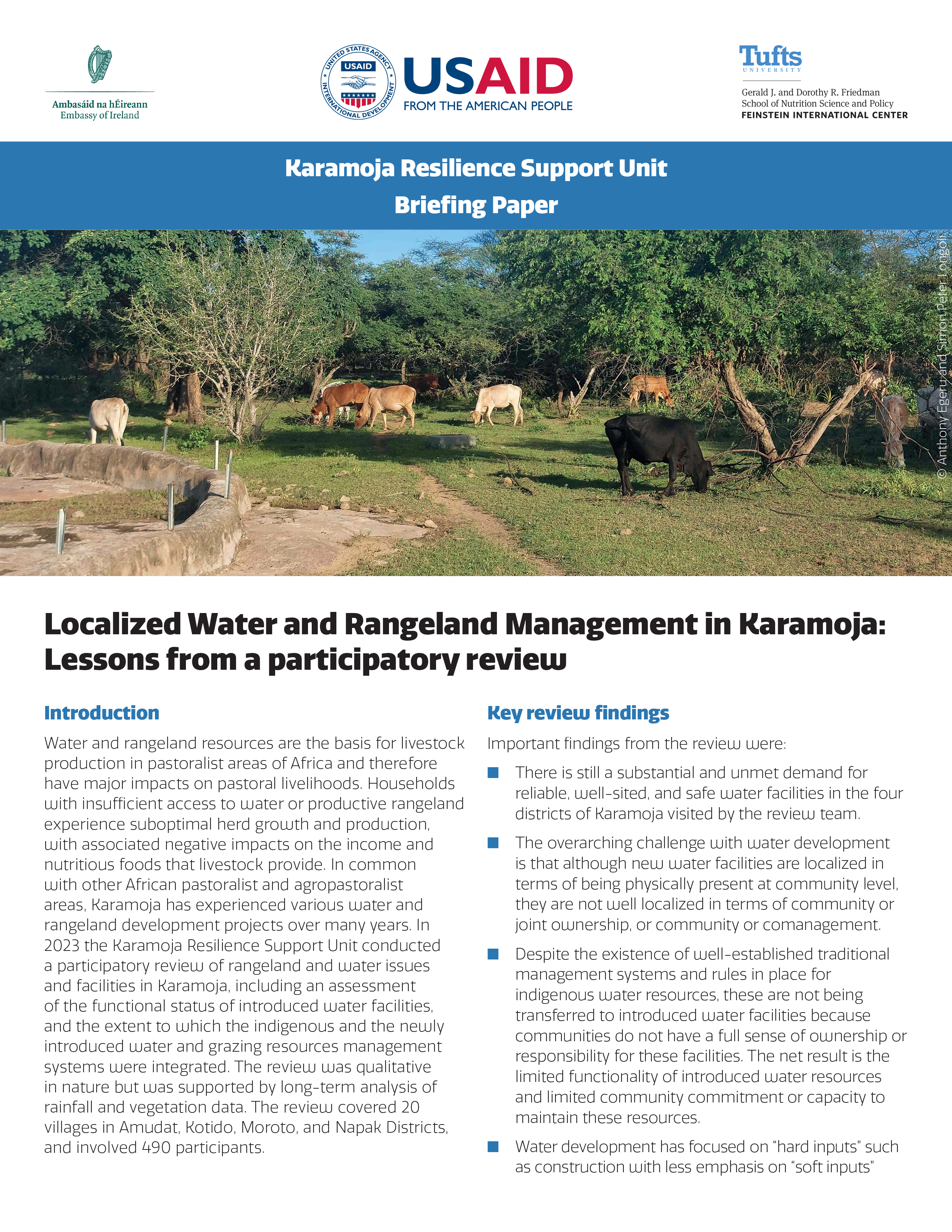
Localized Water and Rangeland Management in Karamoja: Lessons from a participatory review
Water and rangeland resources are the basis for livestock production in pastoralist areas of Africa and therefore have major impacts on pastoral livelihoods. Households with insufficient access to water or productive rangeland experience suboptimal herd growth and production, with associated negative impacts on the income and nutritious foods that livestock provide. In common with other African pastoralist and agropastoralist areas,
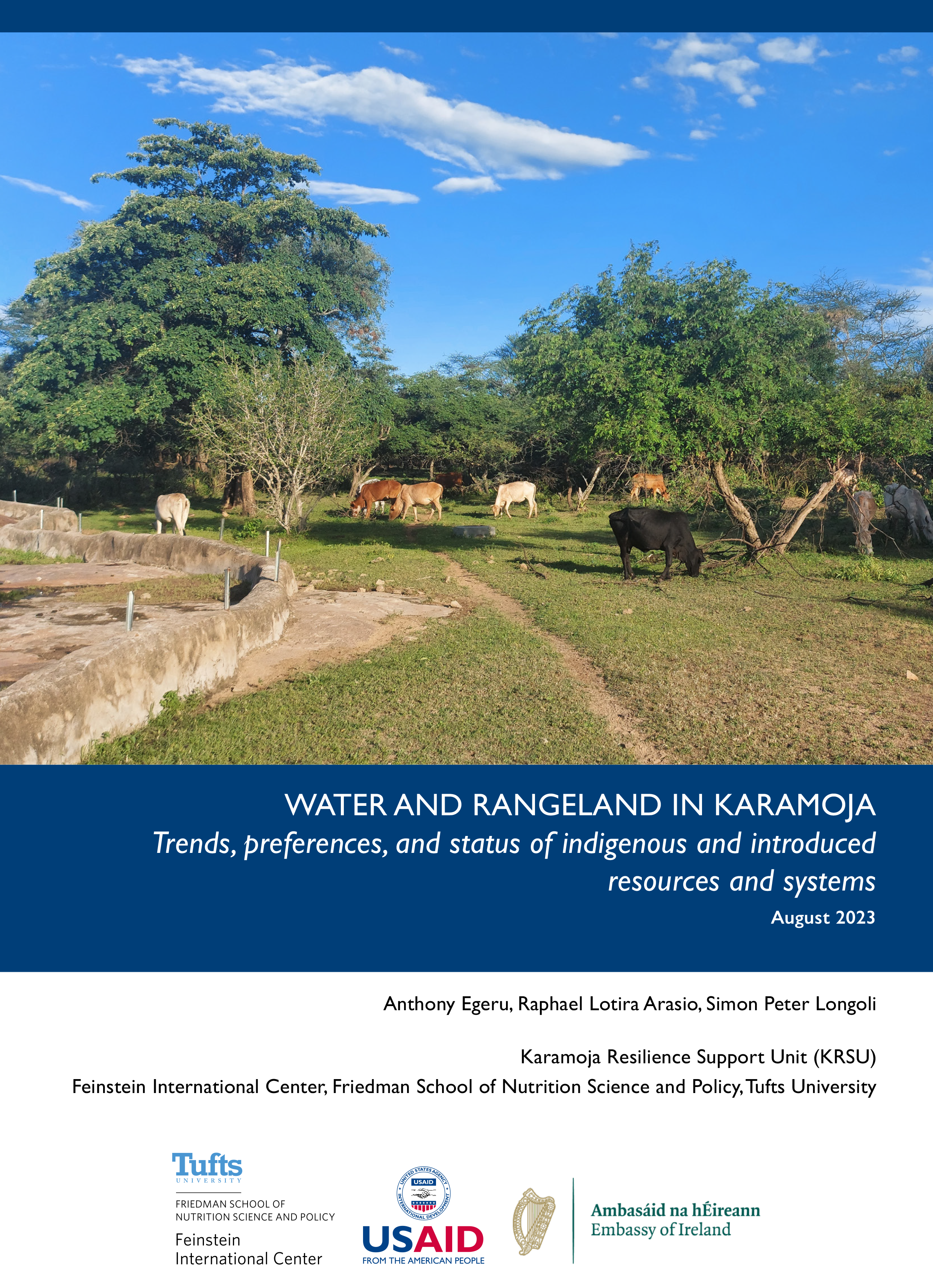
WATER AND RANGELAND IN KARAMOJA
Water and rangeland resources are the basis for livestock production in pastoralist areas of Africa and therefore have major impacts on pastoral livelihoods. Households with insufficient access to water or productive rangeland experience suboptimal herd growth and production, with associated negative impacts on the income and nutritious foods that livestock provide.

Improving practice: enhancing pastoralism policy
Although extensive research has been conducted into pastoralism, the sector – from its actors and systems to economic and environmental impacts – remains largely misunderstood. This is exacerbated by the fact that those living and working in pastoral communities often have trouble effectively expressing the processes they engage in and the benefits of pastoralism.

Livestock in Karamoja: improving markets and veterinary services
As Karamoja is a predominantly a pastoralist region, market trading of livestock is key to the region’s economy. However, a number of factors – ranging from policies and seasonality to price trends and market types – prevent livestock value chain actors from maximising their income and achieving livelihood security.
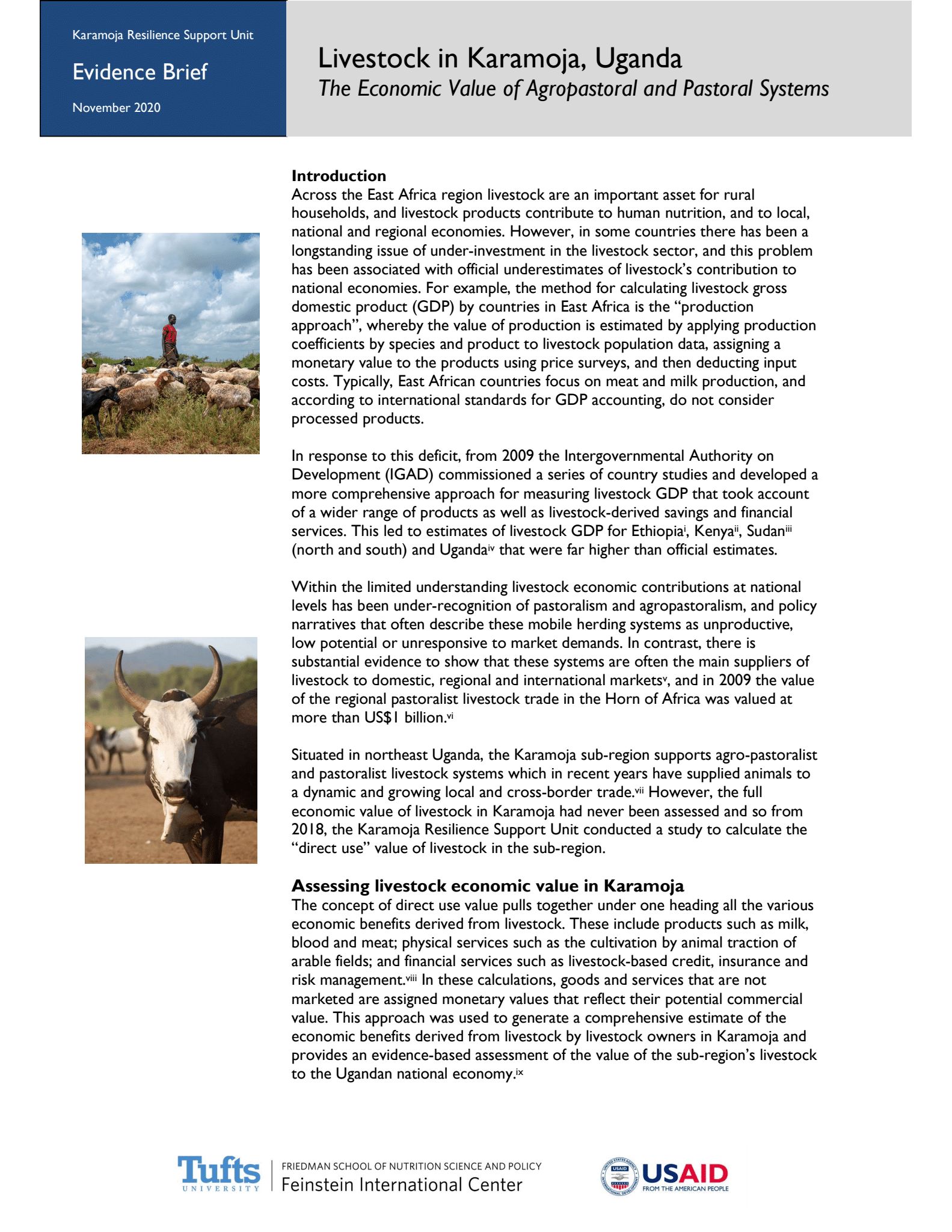
Livestock in Karamoja, Uganda- The Economic Value of Agropastoral and Pastoral Systems
Across the East Africa region livestock are an important asset for rural households, and livestock products contribute to human nutrition, and to local, national and regional economies. However, in some countries there has been a longstanding issue of under-investment in the livestock sector, and this problem has been associated with official underestimates of livestock’s contribution to national economies.

THE PRODUCTIVITY AND ECONOMIC VALUE OF LIVESTOCK IN KARAMOJA SUB-REGION, UGANDA
This report calculates the direct use value of livestock in Karamoja Sub-region, Uganda. The concept of direct use value pulls together under one heading all the various economic benefits derived from livestock.
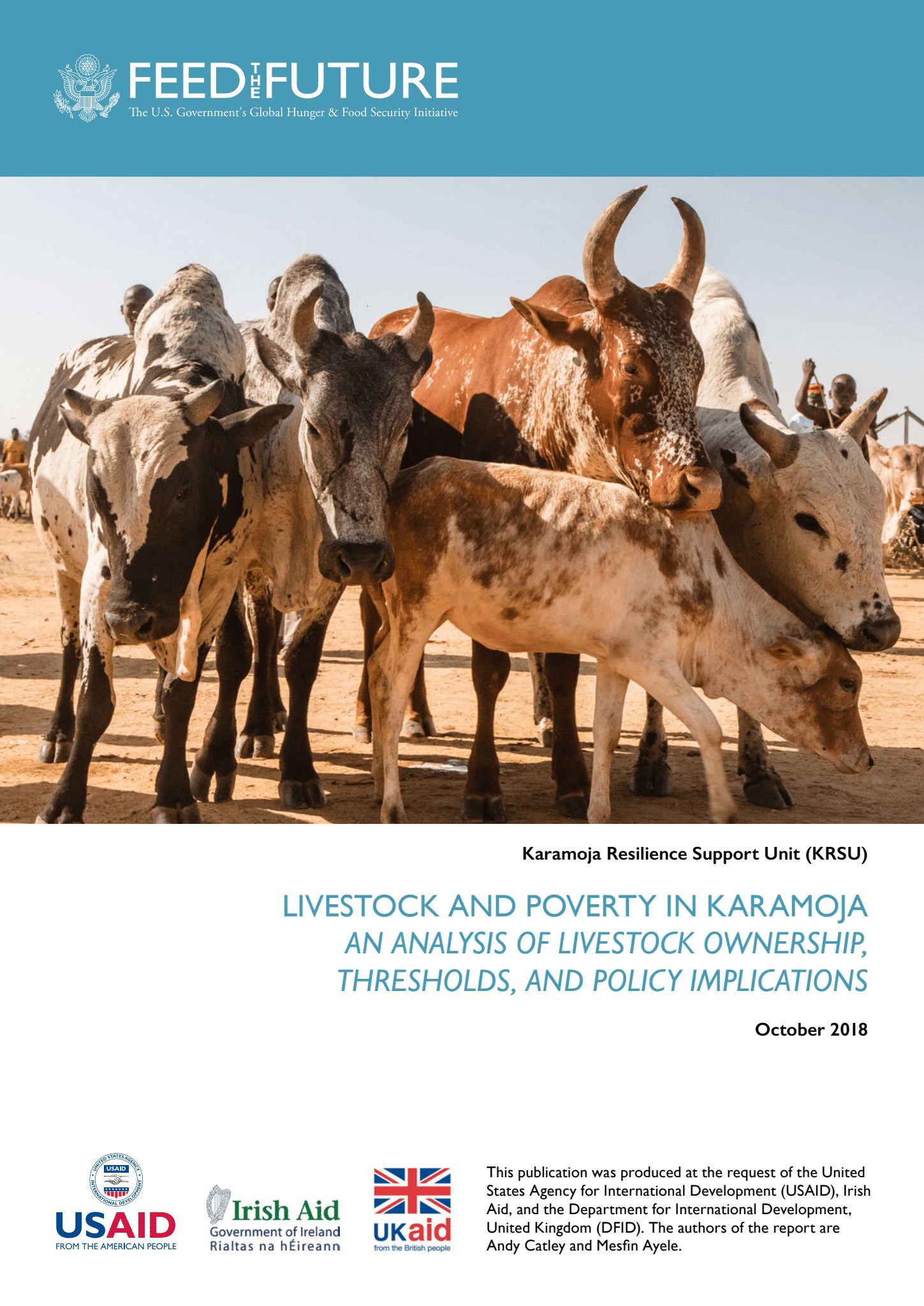
LIVESTOCK AND POVERTY IN KARAMOJA AN ANALYSIS OF LIVESTOCK OWNERSHIP, THRESHOLDS, AND POLICY IMPLICATIONS
In pastoralist and agro-pastoralist households in East Africa, livestock not cash are usually the main financial asset. Animals are sold to buy grain and to meet other domestic needs, and animals also provide food, especially milk, for direct human consumption.
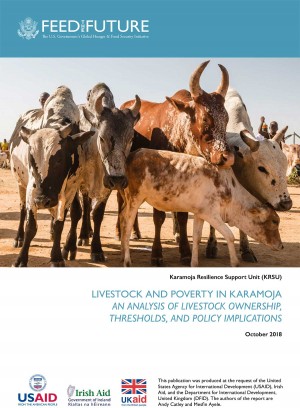
Livestock and Poverty in Karamoja – An Analysis of Livestock Ownership, Thresholds, and Policy Implications
This report analyses poverty in Karamoja from the perspective of livestock ownership, and uses a livestock threshold to categorize households as poor and non-poor. High levels of livestock poverty are then discussed in relation to programming and policy options
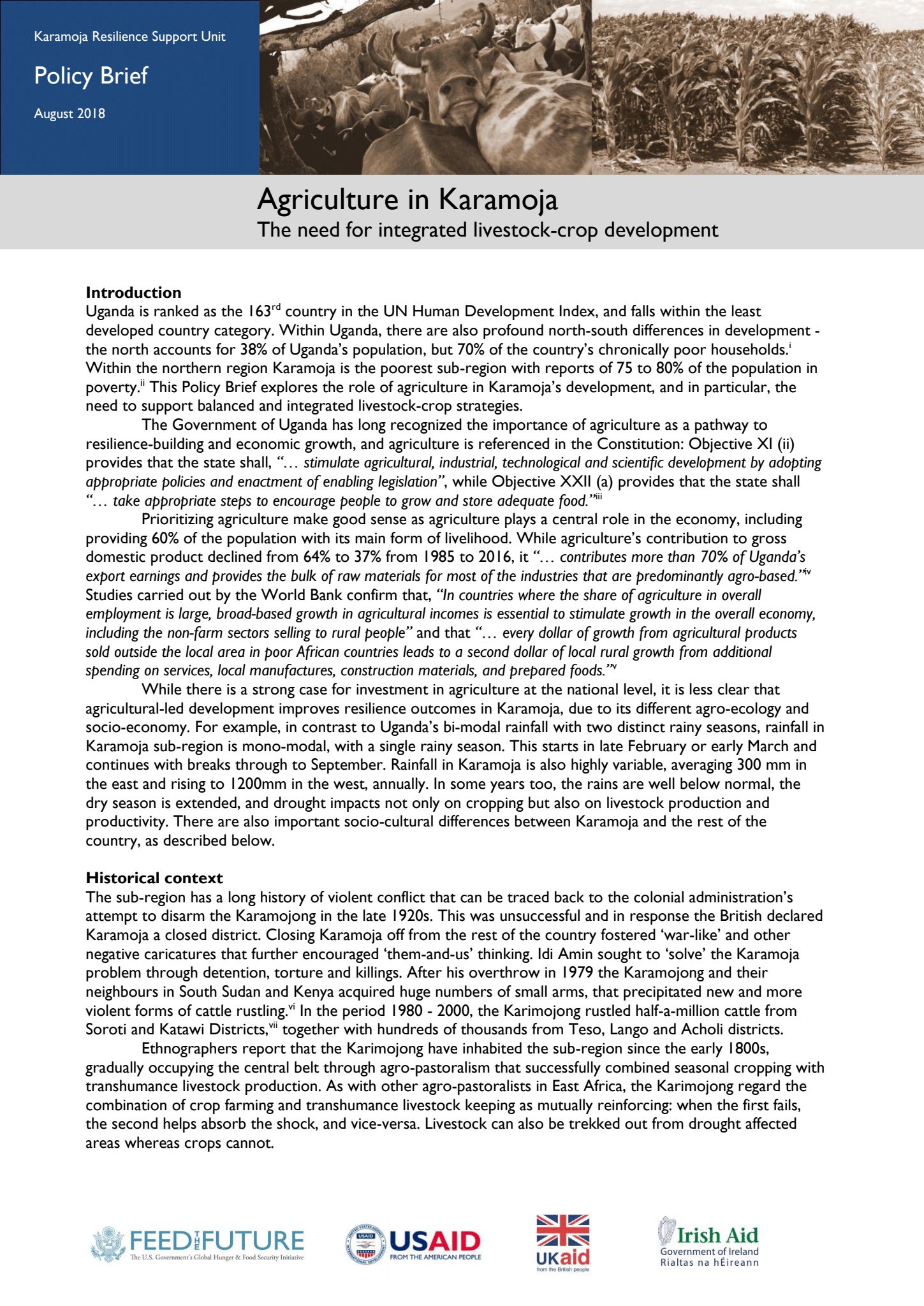
Agriculture in Karamoja-The need for integrated livestock-crop development
This Policy Brief explores the role of agriculture in Karamoja’s development, and in particular, the need to support balanced and integrated livestock-crop strategies.

Livestock Trade Dynamics in Karamoja
In early 2016, a detailed report on livestock marketing in Karamoja, Uganda was published by the USAID/East Africa Resilience Learning Project, and described a dynamic trade and supply of livestock to markets in Uganda, Kenya, and South Sudan.
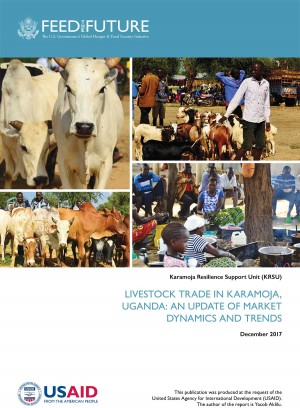
Livestock Trade in Karamoja Uganda – An Update of Market Dynamics and Trends
The KRSU has released an update on livestock marketing in Karamoja, providing comprehensive information on markets dynamics, price and volume trends, and other market performance indicators.
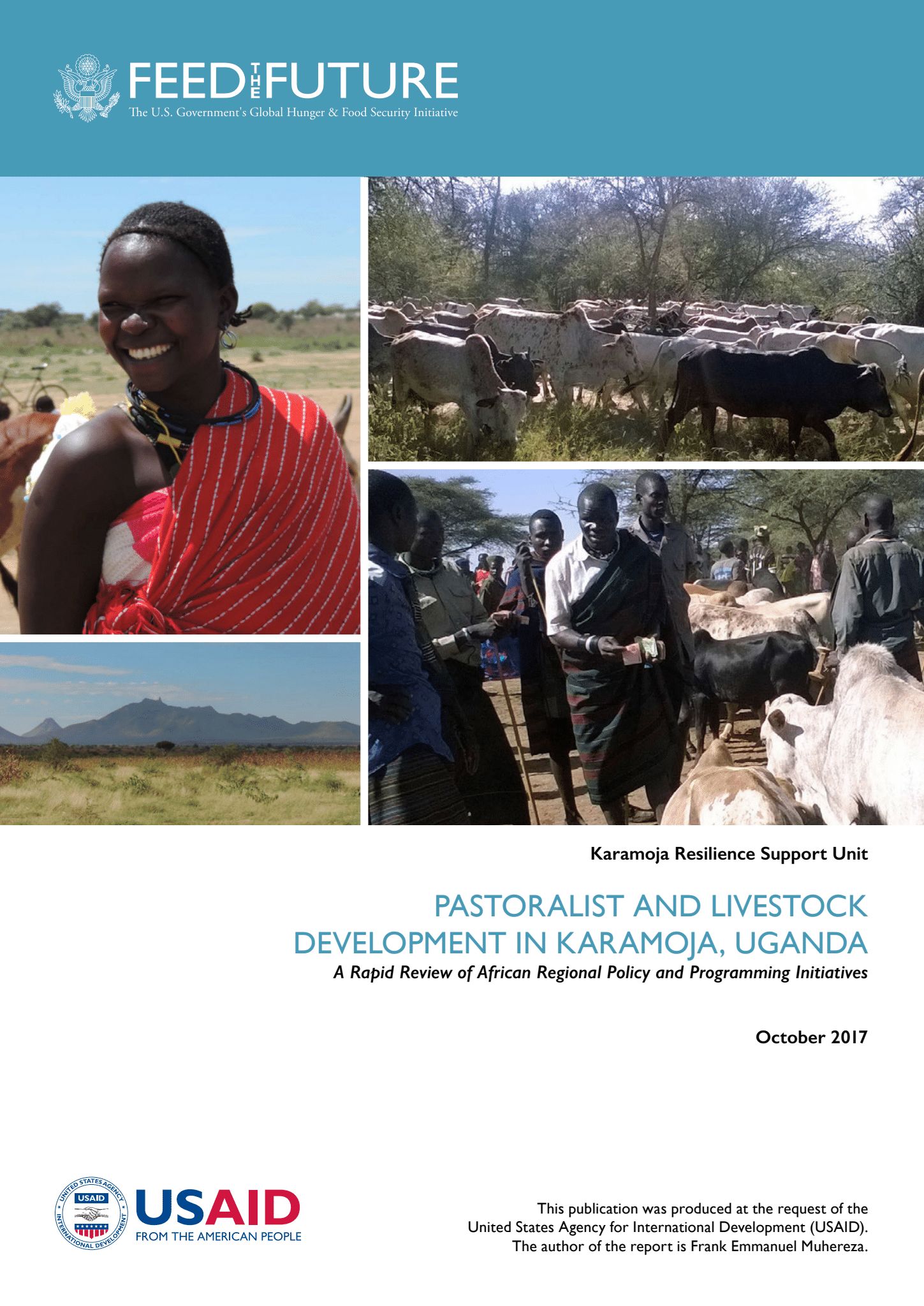
PASTORALIST AND LIVESTOCK DEVELOPMENT IN KARAMOJA, UGANDA
This review examines regional policies and programming initiatives in East Africa and the Horn of Africa related to pastoral areas development, and their relevance to the Karamoja Region of Uganda.
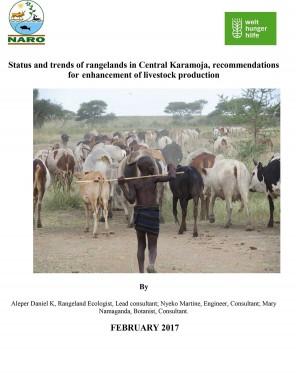
Status and trends of rangelands in Central Karamoja, recommendations for enhancement of livestock production
The study on rangeland management was conducted in the context of decades of livestock keeping, recent increase in cultivation and sedentarisation and climate change. The assessment assess the status of the rangeland using species composition, abundance, ecology, plant associations, and soil cover indices. It also document traditional methods of rangeland management, knowledge, practices and opportunities and in addition locate, and appraise Water Harvesting Sites and also estimate stock numbers and carrying capacity.
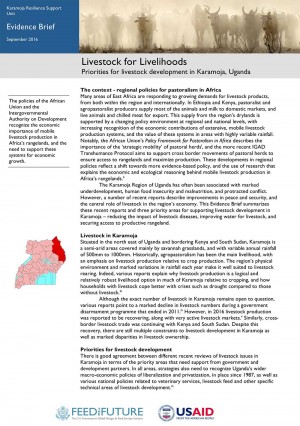
Livestock for Livelihoods- Priorities for livestock development in Karamoja, Uganda
Many areas of East Africa are responding to growing demands for livestock products, from both within the region and internationally. In Ethiopia and Kenya, pastoralist and agropastoralist producers supply most of the animals and milk to domestic markets, and live animals and chilled meat for export. This supply from the region’s drylands is supported by a changing policy environment at regional and national levels, with increasing recognition of the economic contributions of extensive, mobile livestock production systems, and the value of these systems in areas with highly variable rainfall.

Livestock for Livelihoods: Priorities for livestock development in Karamoja, Uganda
An evidence brief on livestock development in Karamoja, Uganda. Recommendations include revitalization of veterinary services is a priority, water development for livestock, and local land use planning by local governments with communities. The African Union’s Policy Framework for Pastoralism in Africa provides an overarching Africa-wide policy to which new policies on range land and pastoralism in Uganda can be aligned, with recognition of the importance of strategic herd mobility.
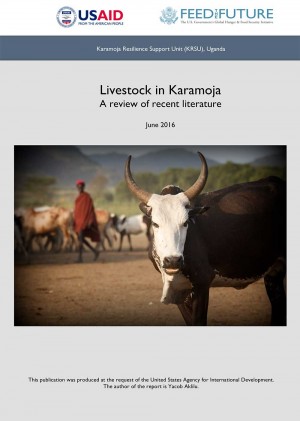
Livestock in Karamoja: A review of recent literature
The review synthesizes the main issues impacting livestock production in the region and identifies critical factors affecting livestock production. This review is drawn largely from the literature produced during the last five years on Karamoja generally, and more specifically on the livestock sector in Karamoja. Additional information was obtained through interviews in Kampala and Moroto with Government and NGO staff in April and May 2016.
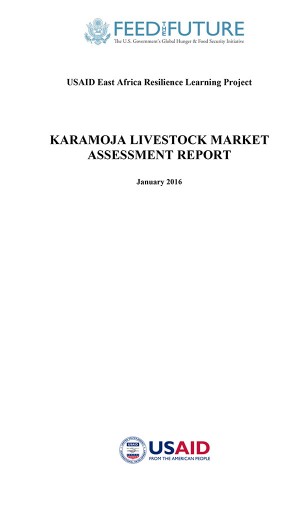
Karamoja Livestock Market Assessment Report
This report presents an analysis of livestock marketing in the Karamoja region of north-east Uganda. This assesment reviews the current status of livestock marketing and trade in Karamoja, including cross-border trade with Kenya and South Sudan. The assessment explains the economic logic of herd growth in Karamoja as a means to build household financial capital, and questions the notion of Karamojong herders as unresponsive to price and opportunity. The assessment reports a practice of 'trading up' in which bulls are fattened and exchanged for heifers, as well as a dynamic livestock market activity in Karamoja. Key constraints to livestock production are highlighted - weak veterinary services and problems with livestock water supply.
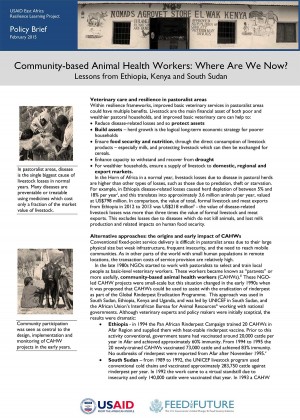
Community-based Animal Health Workers: Where Are We Now? Lessons from Ethiopia, Kenya, and South Sudan
A policy brief on evidence on community-based animal health workers in Ethiopia, Kenya, and South Sudan. At community-level, CAHWs are seen as valuable service providers and outperform other types of animal health care in most aspects of service provision. The main constraint is the supply of veterinary medicines in contexts of mixed policy support to veterinary privatization and limited government capacity to ensure the quality of imported or locally-manufactured medicines. In Kenya, these issues are compounded by a lack of policy or legislative support to CAHWs, combined with weak service provision by other providers in pastoralist areas
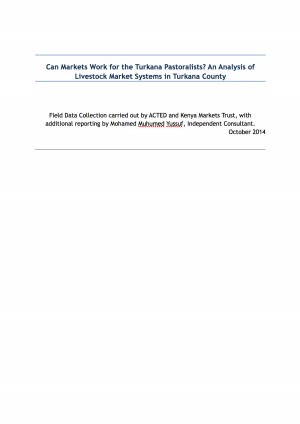
Can Markets Work for the Turkana Pastoralists? An Analysis of Livestock Market Systems in Turkana County
The following assessment was carried out in order to provide a contextual analysis of the livestock market systems in Turkana County. This analysis aims to contribute to an understanding of the wider context of pastoralist livestock systems that will fit into MAP͛'s existing livestock strategy.
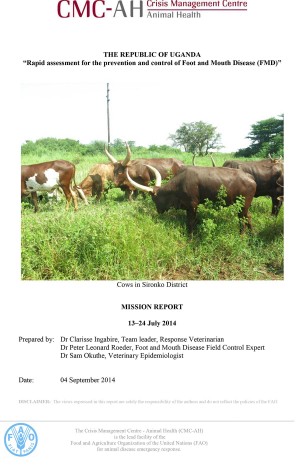
Rapid assessment for the prevention and control of Foot and Mouth Disease (FMD)
Assist the Veterinary Services of Uganda to assess FMD, and suggest enhancements to prevent further spread; examine and advise on strategic interventions to be implemented, and future coordination; develop a detailed short and medium term action plan for resource mobilization at national and regional levels.
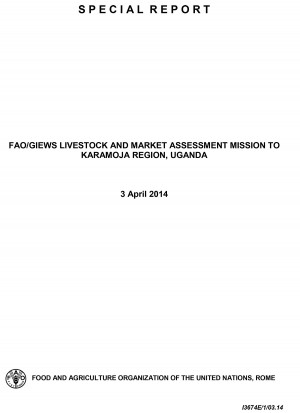
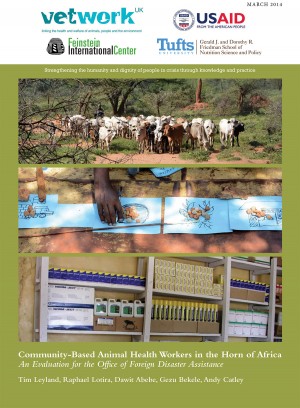
Community-Based Animal Health Workers in the Horn of Africa: An Evaluation for the Office of Foreign Disaster Assistance
Evaluation of USAID Office of Foreign Disaster Assistance (OFDA)-funded Community-Based Animal Health Worker (CAHW) programs in the Horn of Africa
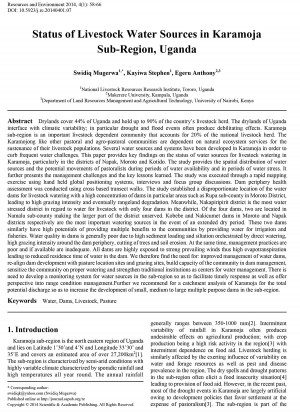
Status of Livestock Water Sources in Karamoja Sub-Region, Uganda
This paper provides key findings on the status of water sources for livestock watering in Karamoja, particularly in the districts of Napak, Moroto and Kotido.
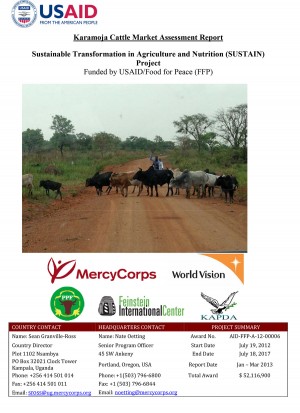
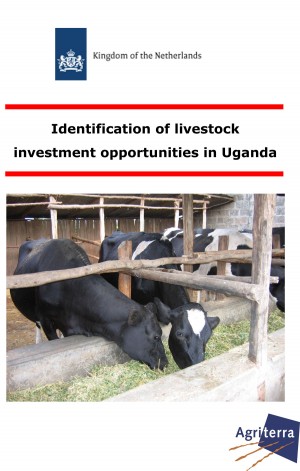
Identification of Livestock Investment Opportunities in Uganda
The purpose of this study is to identify investment opportunities in the livestock sector in Uganda. Undertaken with financial support by the Netherlands Embassy (EKN) in Uganda, the study support’s EKN’s policy of stimulating food security and economic diplomacy in Uganda.
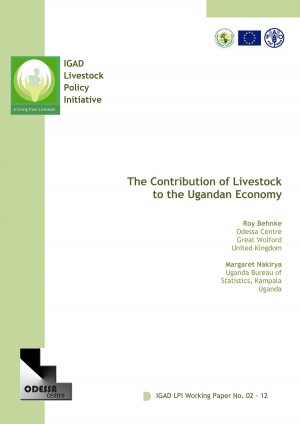
The Contribution of Livestock to the Ugandan Economy
This is the fifth in a series of reports on the contribution of livestock to the economies of the IGAD member states. Building on methodologies developed in earlier studies of the role of livestock in the economies of Ethiopia, Kenya and Sudan, the present report undertakes an assessment of the contribution of livestock to Uganda’s national economy.